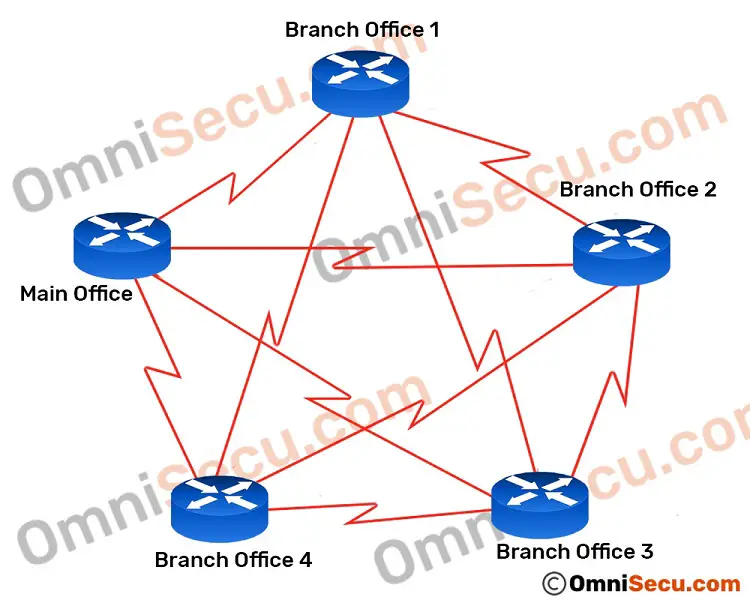Full-mesh Site-to-Site Wide Area Network (WAN) topology
Large Enterprises have multiple business offices (physical sites) in different geographical locations. Normally, Internet Service Providers (ISPs) provide network connectivity solutions to connect multiple physical sites in different geographical locations.
In a Full-mesh site-to-site Wide Area Network (WAN) topology, every physical site is connected to every other site, using WAN links.

Since all physical sites are connected together, Full-mesh topology is highly redundant. Time lag is least in Full-mesh topology, when comparing Hub-and-spoke and Partial-mesh topologies. A Full-mesh Site-to-Site WAN topology is the most desirable WAN topology.
A Full-mesh network is difficult to build and maintain. Full-mesh network is much expensive than Hub-and-spoke and Partial-mesh topologies because every physical site requires a WAN link to connect every other physical site.
Other site-to-site Wide Area Network (WAN) topologies are